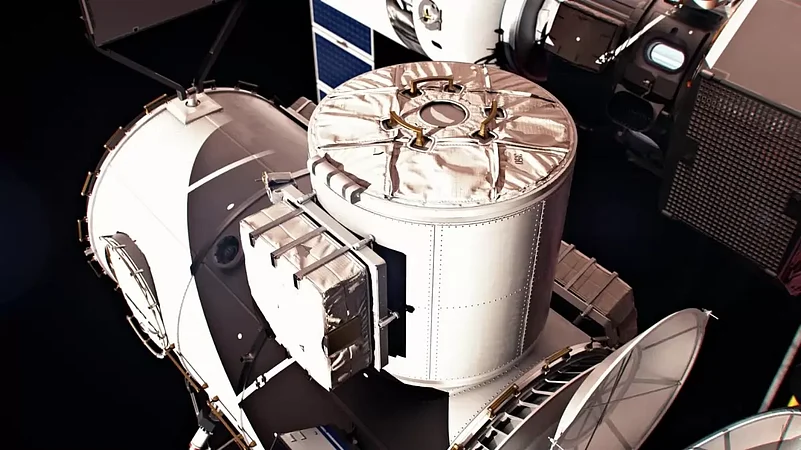The United Arab Emirates has committed to creating an airlock module for the lunar Gateway, contributing to the lunar space station's design and strengthening the UAE's involvement in the Artemis lunar exploration mission.
On January 7, NASA and the Mohammed bin Rashid Space Centre (MBRSC) of the UAE revealed a collaborative effort where the UAE will provide the Crew and Science Airlock for the Gateway. This module will enable Gateway crews to conduct spacewalks outside the Gateway and facilitate the installation and retrieval of external science payloads.
While the announcement did not specify the exact timeline for adding the airlock to the Gateway, Hamdan bin Mohammed, the crown prince of Dubai, mentioned in a social media post that the project is anticipated to be finished by 2030. Additionally, as part of the agreement, the UAE will secure a spot on a future Artemis mission.
“The United States and the United Arab Emirates are marking a historic moment in our nations’ collaboration in space, and the future of human space exploration,” NASA Administrator Bill Nelson said in a statement announcing the agreement. “The UAE’s provision of the airlock to Gateway will allow astronauts to conduct groundbreaking science in deep space and prepare to one day send humanity to Mars.”
The lunar Gateway was initially conceived as an extension of the established International Space Station partnership, involving contributions from the United States, Europe, Japan, and Canada. This Gateway will orbit the moon in a near-rectilinear halo orbit, facilitating lunar landings in the southern polar region. Its construction will occur through a series of missions, commencing with the launch of a propulsion element and habitation module aboard a Falcon Heavy rocket in 2025.
This agreement marks the most recent achievement for the UAE's expanding space program, which has notably included the successful Hope mission, entering Mars orbit in February 2021, as well as the extended mission to the International Space Station (ISS) by UAE astronaut Sultan Al Neyadi as part of the Crew-6 mission last year.
The UAE has expressed its keenness to be part of both the NASA-led Artemis program and an alternative led by China known as the International Lunar Research Station (ILRS).
Notably, the UAE was among the initial eight signatories of the Artemis Accords, which establish guidelines for responsible space exploration but do not automatically guarantee participation in the Artemis initiative.
“This is a historic development and the culmination of momentum that began when the UAE became a founding signatory to the Artemis Accords,” commented Mike Gold, the Chief Growth Officer at Redwire and a former NASA official who played a role in shaping the Accords, in a statement to SpaceNews.
“Gateway represents the physical manifestation of the international nature of Artemis,” he said. “At a time when the world is facing conflict and strife, space exploration brings us together in a way that no other field of endeavor can. UAE’s bold commitment to build the literal doorway to the moon has further expanded the singular global partnership that is at the heart of Artemis.”

















